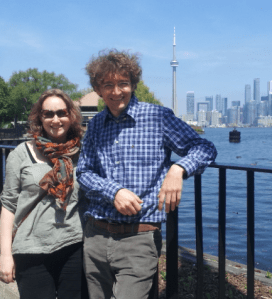
Schematic of M R Feldman et al‘s proposed experiment. The test mass retroreflector, exhibiting harmonic motion within the tunnel of the larger layered sphere, is represented by the filled black circle on the left. Determinations of the round trip light-time from the host spacecraft (on the right) using an onboard ranging system provide measurements of the period of the oscillator.
Newton’s gravitational constant, G, is crucial for fundamental physics: it governs how much spacetime curves for a given mass, is essential for metrology, and might give clues to a deeper understanding of quantum gravity. However, G continues to present unexpected issues in need of resolution. Determinations over the last thirty years have yielded inconsistencies between experiments significantly greater than their reported individual uncertainties, oddly with possible periodic behavior. To push forward, the National Science Foundation (NSF) has recently called for new “high-risk/high-impact” proposals to produce a step-change improvement in measurements (NSF 16-520).
In response, we propose taking advantage of the classic gravity train mechanism by Continue reading










You must be logged in to post a comment.